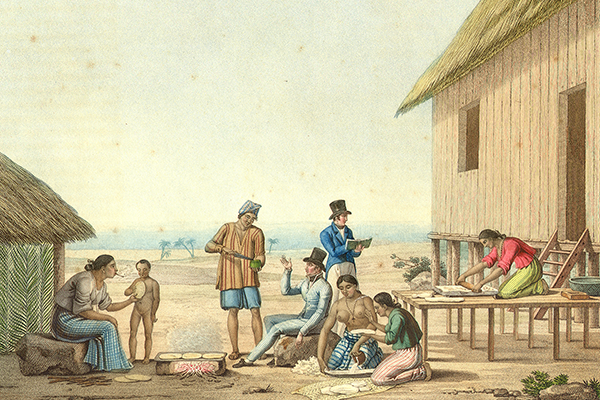Indios

Native peoples
Indios were defined as the native indigenous peoples in all the Spanish American and Asian possessions. During the Spanish colonial period in the Mariana Islands (17th through 19th centuries) the CHamoru people were classified as indios. In the Spanish racial hierarchy, indios were the lowest-ranked group. The order was peninsulares, criollos, mestizos, Filipinos and indios.
Originally, native Filipinos were included in the indio category in the Mariana Islands along with CHamorus, but were later designated as “Filipinos” in Spanish censuses. The Spaniards first brought Filipinos to the Mariana Islands in the 17th Century to serve in the seccion de guardia civil urbano-rural (Spanish army in the Marianas).
Because of expensive Spanish taxes levied on peninsulares (Spanish-born Spaniards), criollos (Marianas-born Spaniards), and mestizos (part-CHamoru and part-Spanish individuals), many mestizos with darker skin complexions would state that they were full-blooded CHamorus – indios – to avoid paying. Additionally, many Japanese-CHamorus and Chinese-CHamorus were mistakenly thought to be CHamorus and also classified as indios.
For further reading
Driver, Marjorie G. The Account of Fray Juan Pobre’s Residence in the Marianas, 1602. MARC Miscellaneous Series No. 8. Mangilao: Micronesian Area Research Center, University of Guam, 1993.
Fritz, Georg. The Chamorro: A History and Ethnography of the Mariana Islands. Translated by Elfriede Craddock and edited by Scott Russell. Occasional Historical Papers Series, No. 1. Saipan: Commonwealth of the Northern Mariana Islands Division of Historic Preservation, 1989.
García, Francisco Olive y. The Mariana Islands, 1884-1887: Random Notes. 2nd ed. Translated and annotated by Marjorie G. Driver. Mangilao: Micronesian Area Research Center, University of Guam, 1984.
Ibañez del Carmen, Aniceto, OAR, and Francisco Resano del Corazón de Jesús, OAR. Chronicle of the Mariana Islands: Recorded in the Agaña Parish Church 1846-1899. Translated, annotated, and edited by Marjorie G. Driver and Omaira Brunal-Perry. Mangilao: Micronesian Area Research Center, University of Guam, 1998.
Rogers, Robert. Destiny’s Landfall: A History of Guam. Honolulu: University of Hawai`i Press, 1995.